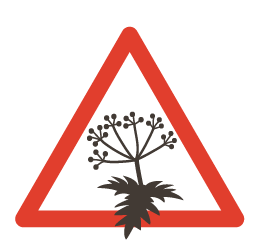Nutria (Coypu) – Myocastor coypus
- Overview
- Images
- Identify
- Biology
- Taxonomy
- Occurrence
- Specimen
- Invasive alien species

Description
The coypu, also known as the river rat or nutria.
Coypus prefer habitats near lush waterways and are rarely observed over 100m away from water. They sometimes move from one waterway to another, and migrate long distances on the ground. Coypus dig burrows in riverbanks using the strong claws of their forelegs and clear highly visible paths through the vegetation. They are skilled swimmers and divers and can stay submerged up to five minutes. A rat-like tail is the feature that distinguishes the coypus from beavers. Coypus are active during twilight and at night, feeding mainly on aquatic plants as well as molluscs and waterfowl eggs.
Coypus live in pairs or small family groups (matriarchal clans). They may reproduce throughout the year, reaching sexual maturity at 3 to 10 months and have 2 or 3 litters per year. The litter size is five on average, but may be as high as 10. Hence, coypus reproduce effectively. The young are mobile immediately after birth and start to swim a few hours later. Cold winters affect this species’ reproductive efficiency, particularly its fetal mortality, but also its adult mortality. In their native range in South America, coypus are prey for alligators, fish, snakes and birds of prey. They are hunted for meat and farmed both for their meat and valuable fur.
Description text authors:
Kaarina Kauhala (Luke) – updated 27.4.2016.
The map represents observations of this taxon, but it may not be used as a distribution map.
- Total squares
- nutria (Finnish)
- sumpbäver (Swedish)
- Nutria (English)

| Establishment | Does not occur in Finland |
|---|
Invasive alien species of Union concern (EU 2016/1141; 2017/1263; 2019/1262; 2022/1203) ?
- Thomas Lilley
- Mammals
- Small mammals